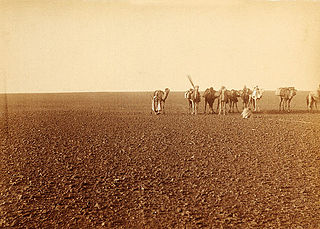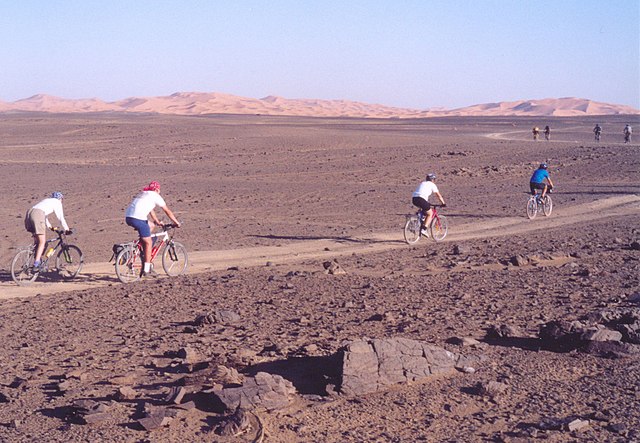Top Qs
Timeline
Chat
Perspective
Hamada
Desert landscape with mostly rock instead of sand From Wikipedia, the free encyclopedia
Remove ads
A hamada (Arabic: حمادة, ḥammāda) is a type of desert landscape consisting of high, largely barren, hard rocky (basalt) plateaus, where most of the sand has been removed by deflation.[1] The majority of the Sahara is hamada.[2] Other examples are Negev desert in Israel and the Tinrhert plateau in Algeria.[2]




Remove ads
Formation
Hamadas are produced by the wind, which removes the fine products of weathering, an aeolian process known as deflation. The finer-grained products are taken away in suspension. At the same time, the sand is removed through saltation and surface creep, leaving behind a landscape of gravel, boulders and bare rock.[3]
Related landforms
Hamada is related to desert pavement (known variously as reg, serir, gibber, or saï), which occurs as stony plains or depressions covered with gravels or boulders rather than as highland plateaus.[1]
Hamadas exist in contrast to ergs, which are large areas of shifting sand dunes.[4]
See also
Hammada, a genus of flowering plants belonging to the family Amaranthaceae.
References
Wikiwand - on
Seamless Wikipedia browsing. On steroids.
Remove ads
